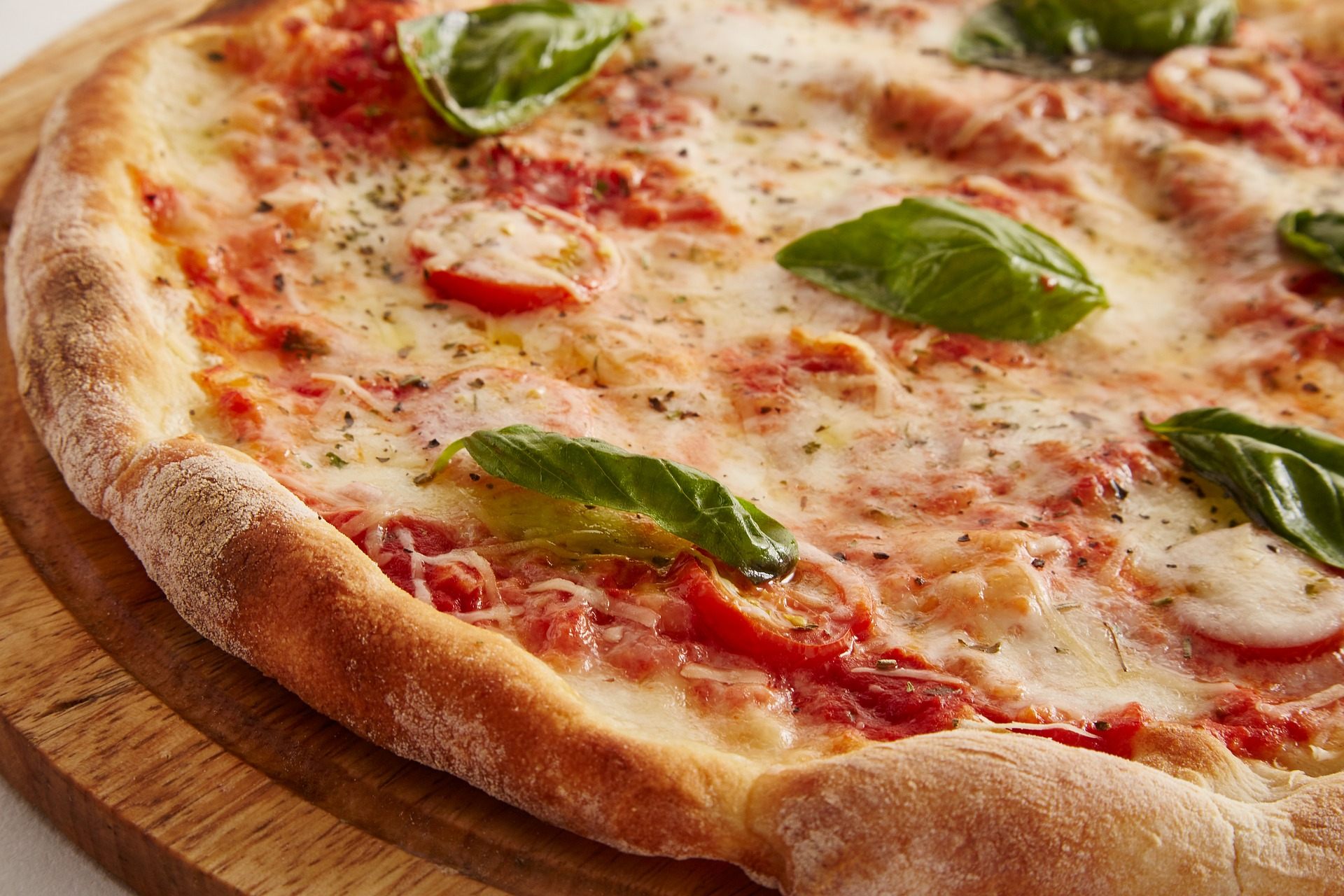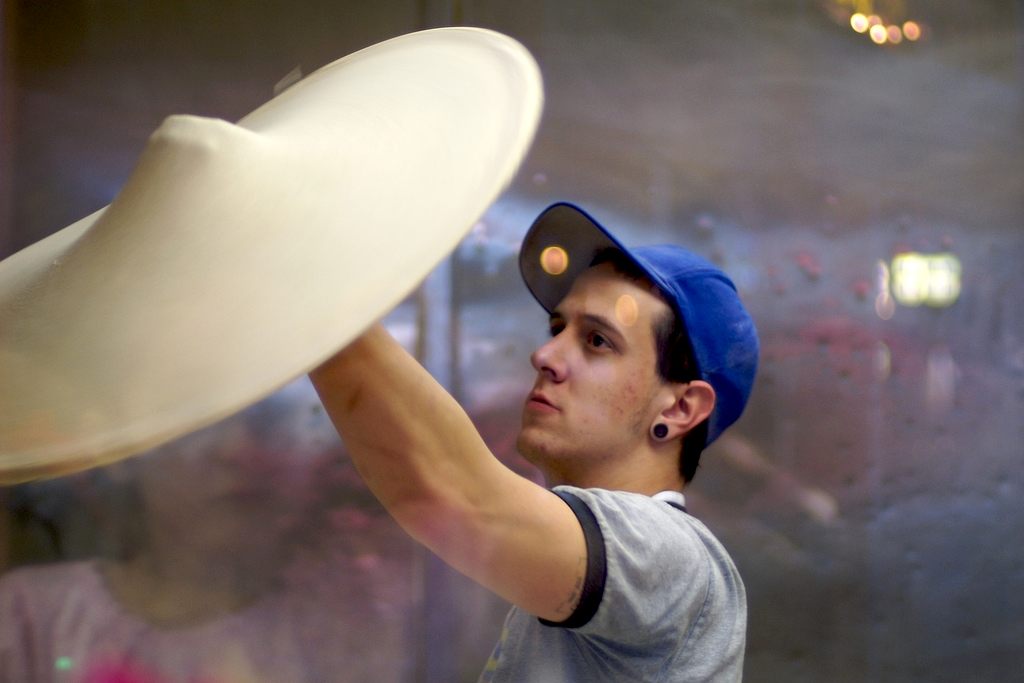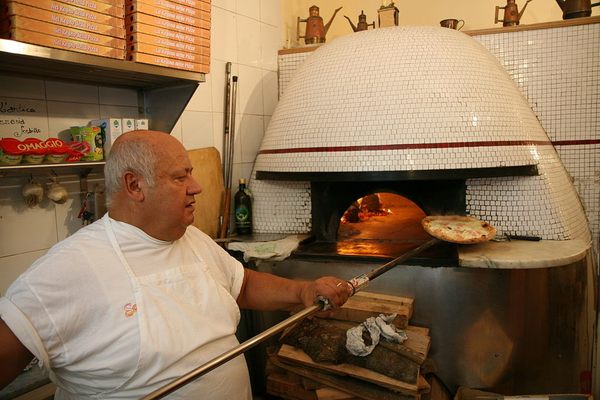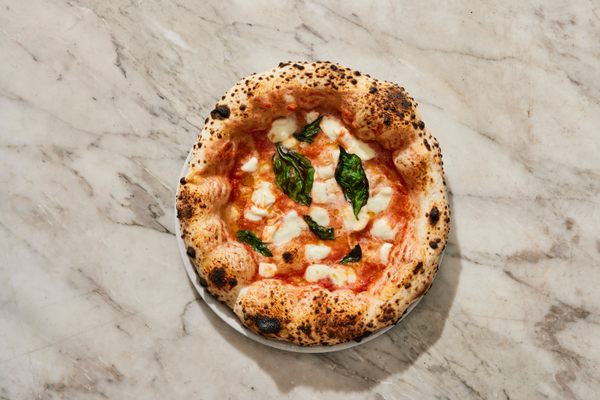Remembering When ‘The New York Times’ Explained Pizza
No “pizzas” here, only “pizze.”

On September 20, 1944, the New York Times published its “News of Food” column. A new dish was being offered in the United States “for Home Consumption,” the headline read. Reporter Jane Holt went on to describe this exotic new dish: pizza. It’s “a pie made from yeast dough and filled with any number of centers,” she wrote, “each one containing tomatoes.” It could even be taken home in a custom box.
Holt goes on to describe the pizza-making process to readers who likely had no idea what this entailed. After balls of dough are made, “with the dexterity of a drum major wielding a baton,” the baker “picks one up and twirls it around … the dough grows wider and wider and thinner and thinner.” The stretched dough is filled with “[cheese], mushrooms, anchovies, capers, and so on.” She describes the process of making a calzone, too.
Holt attributes “pizza,” plural “pizze,” to southern Italy, especially Naples. But pizza was eaten in New York and other American cities decades before this column was written. What’s held to be the first pizza place in New York, Little Italy’s Lombardi’s, was founded in 1905. Pizza had even been mentioned in the newspaper before, in 1940. But in the early 20th century, food with “ethnic” associations was often looked at askance. Anti-Italian sentiment meant Italian food, especially garlic, was given the side-eye. Holt’s detailed, positive description of pizza is an endorsement of an unfamiliar dish, as well as an encouragement. Typical American food at the time was much blander. In the rest of the column, Holt provides a sample menu for readers to make at home: mayonnaise, prunes, and gravy all feature.

Holt doesn’t get it all right, and she clearly comes to pizza as an outsider. Mozzarella, she writes with confidence, is made with goat’s milk (usually it’s cow or buffalo). Pizza, to her surprise, is cooked without a pie tin and moved around with a board. But Jane Holt was ahead of her time in other ways. Her real name was Margot Murphy McConnell, and her “News of Food” was the New York Times’s original food column.
Active during World War II, she wrote on where and how to buy food with shipping routes disturbed and rationing under effect. She advocated solutions such as “salvaged fats” and dehydrated cranberries, and she also turned to different food traditions. In 1945, Holt wrote that meat could be stretched by turning it into stir-fry and fried rice. But such introductions weren’t easy. “I’ve found Americans resist anything new in food,” said Buwei Yang Chao, a female doctor and Chinese cookbook author who Holt interviewed. (Chao’s 1945 book How to Cook and Eat in Chinese introduced the words “stir fry” and “potstickers” into English, as well as the concept of dim sum.)
Holt stopped writing for the Times in 1945, having contributed four years of food writing and recipes. Later, the column she started would introduce another delicacy to Americans: a “bizarre” West Coast innovation, the cheeseburger.
Gastro Obscura covers the world’s most wondrous food and drink.
Sign up for our regular newsletter.

























Follow us on Twitter to get the latest on the world's hidden wonders.
Like us on Facebook to get the latest on the world's hidden wonders.
Follow us on Twitter Like us on Facebook